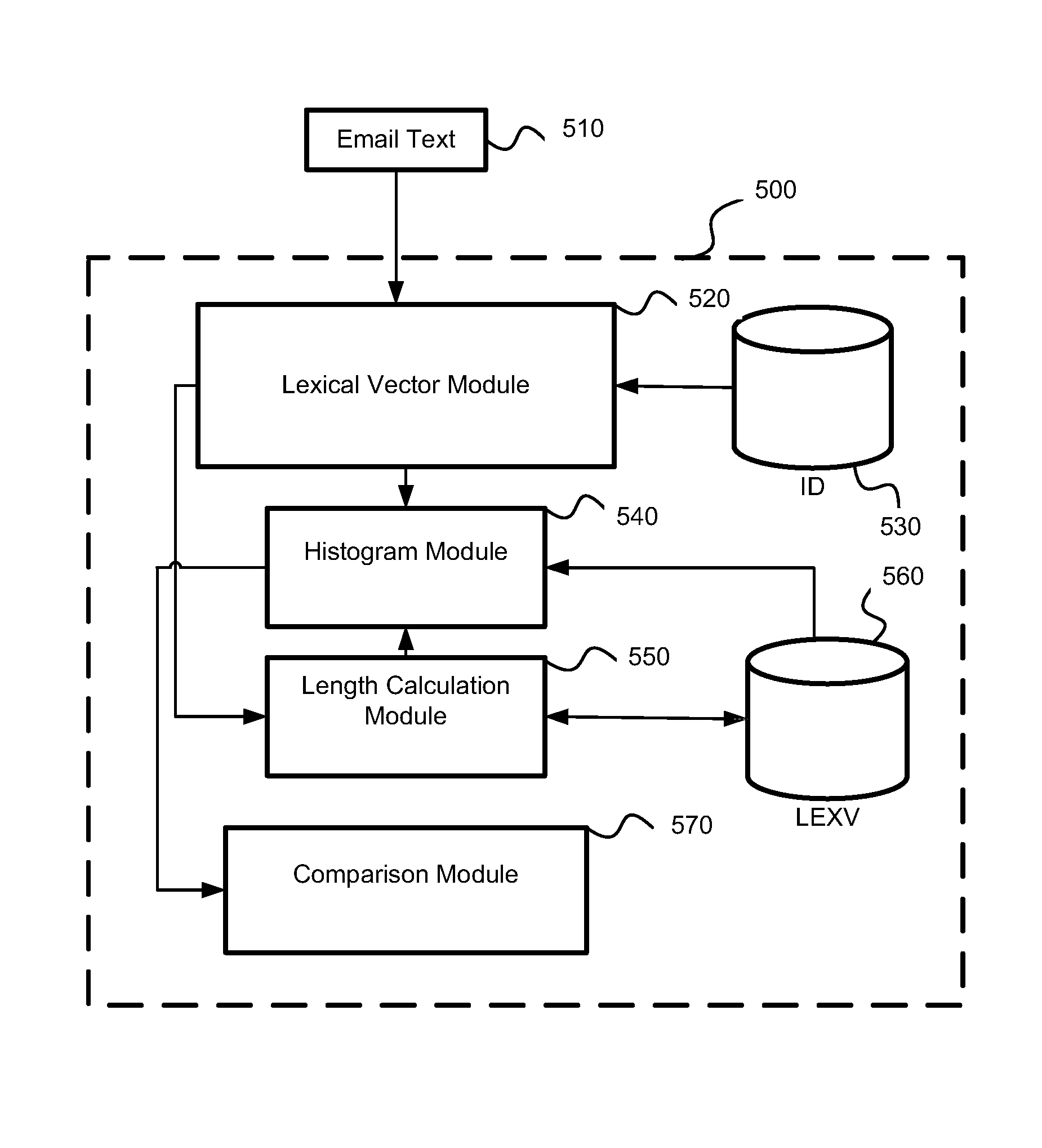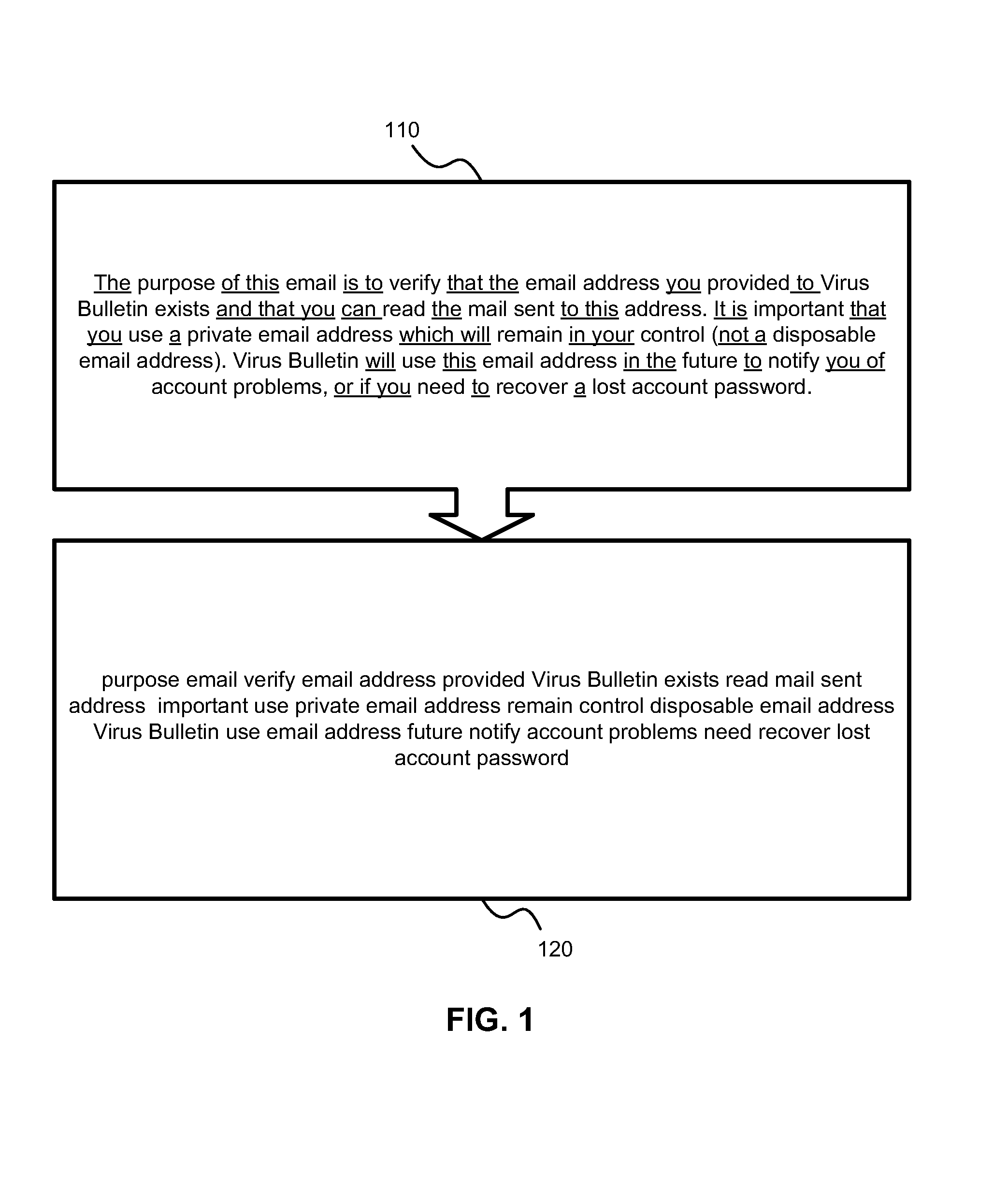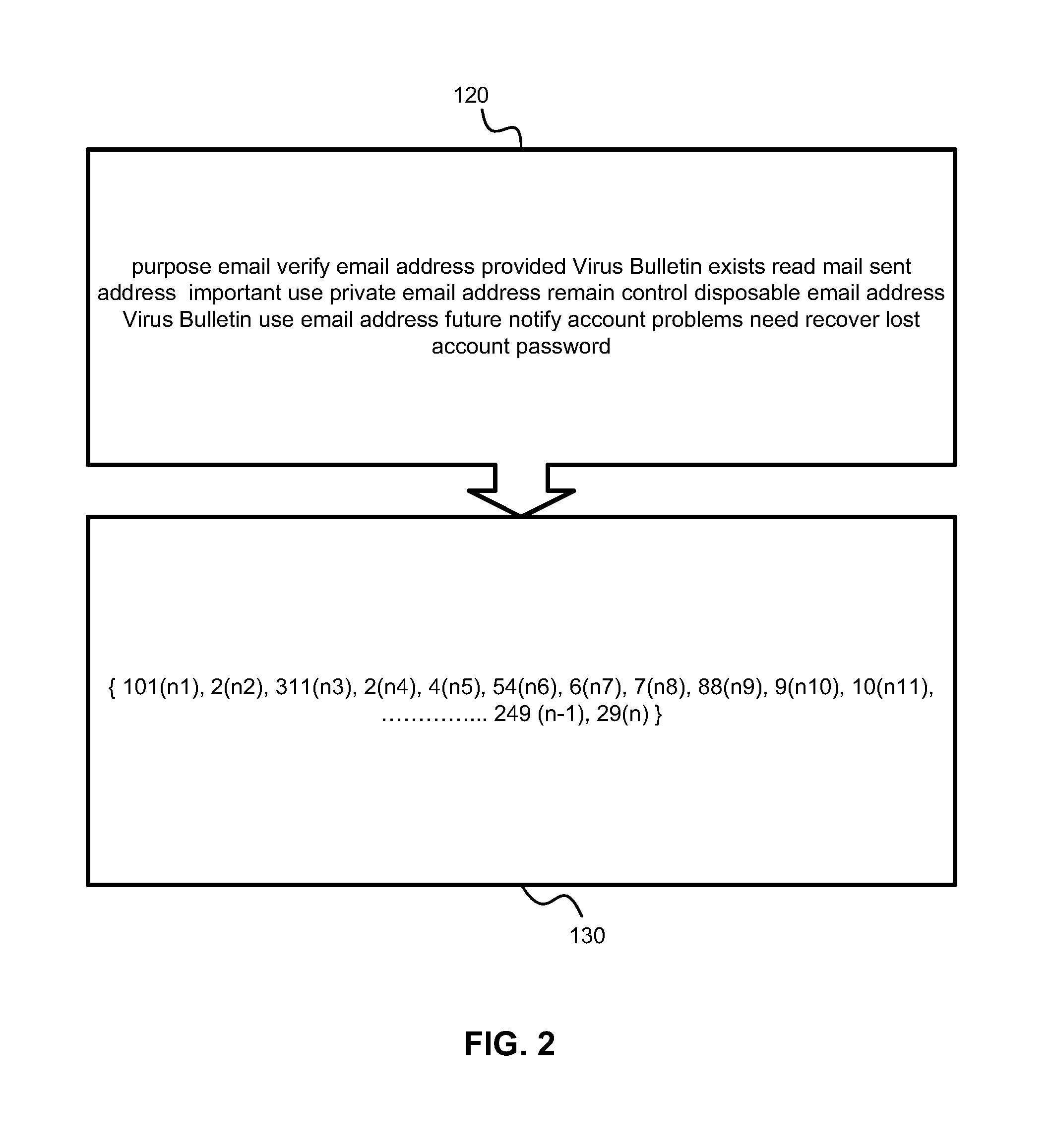Spam identification using an algorithm based on histograms and lexical vectors (one-pass algorithm)
a spam and algorithm technology, applied in the field of spam identification, can solve the problems of large burden on email service providers, large number of spam emails spewed out by computers, and many present methods of spam identification have not been fully successful,
- Summary
- Abstract
- Description
- Claims
- Application Information
AI Technical Summary
Benefits of technology
Problems solved by technology
Method used
Image
Examples
Embodiment Construction
[0023]Reference will now be made in detail to the preferred embodiments of the present invention, examples of which are illustrated in the accompanying drawings.
[0024]In one embodiment, there is provided a method, system and computer program product for identifying spam in the text of the email by using a one-pass algorithm. The one-pass algorithm employs a lexical vector of the text being analyzed and lexical vectors of the known spam texts stored in a database.
[0025]In one exemplary embodiment, a one-pass algorithm for spam identification is provided. According to the one-pass algorithm, unique words and all their variations in the text of the email are identified. The text is normalized morphologically (sometimes this is referred to as ‘lemmatization’) to identify variations of the same root word (‘America’, ‘American’, ‘Americanize’, etc.) and a number of occurrences of each unique word is determined. Noise words are filtered out. An identifier is assigned to each unique word in...
PUM
 Login to View More
Login to View More Abstract
Description
Claims
Application Information
 Login to View More
Login to View More - R&D
- Intellectual Property
- Life Sciences
- Materials
- Tech Scout
- Unparalleled Data Quality
- Higher Quality Content
- 60% Fewer Hallucinations
Browse by: Latest US Patents, China's latest patents, Technical Efficacy Thesaurus, Application Domain, Technology Topic, Popular Technical Reports.
© 2025 PatSnap. All rights reserved.Legal|Privacy policy|Modern Slavery Act Transparency Statement|Sitemap|About US| Contact US: help@patsnap.com



